

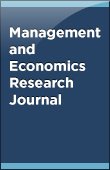
10.18639/MERJ.2020.990010
Original Research Article
Apr 03, 2020
In this study, we investigate the link between default loans and macroeconomic and bank-specific variables to assess exposure of Islamic banks to credit risks, and then design stress testing scenarios to assess the banking system’s resilience to adverse shocks. The results suggest that credit risk exposure of Islamic banks in Sudan is mainly affected by bank-specific variables, which include changes in total assets, total deposits, and total loans; all of them have a negative and significant impact on the probability of default loans. The study also indicates that the macroeconomic variables, which include growth of domestic product, change in exchange rate premium, and change in money supply, have positive but insignificant effects on the risk of default loans. The study concludes by pointing out that the Islamic banking system in Sudan is more vulnerable to bank-specific risk exposure rather than macroeconomic indicators.
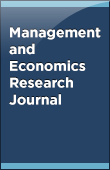
10.18639/MERJ.2020.990012
Original Research Article
Apr 03, 2020
This study aims to assess the determinants of liquidity risk in the full-fledged Islamic banking system of Sudan, using panel data regression. The dependent variable in this research is the liquidity risk, which is determined as the extreme excess or extreme shortage of liquidity in each bank, based on the VaR approach, and the independent variables are bank size, investment, profit, and the budget deficit during the period 2012-2016. The authors’ findings indicate the bankspecific variables such as the size, investment, and profit are statistically significant, whereas the budget deficit variable is negatively associated with liquidity risk but is insignificant. The insignificance of the budget deficit variable is an indication of the government reliance on its deficit financing on debt financing, i.e., excessive money creation, as contrary to equity financing. Also indicated in the paper is that the investment variable has a positive and significant effect on liquidity risk, indicating that Islamic banks’ investment portfolios are dominated by short-term securities (sikook). This result supports the findings in the literature that investment portfolios in Islamic banks are likely to be dominated by short-term investment securities as a result of the absence of risk-hedging tools in the Islamic banking system, in general. The finding in the paper also indicates a positive and significant sign of profit coefficient with liquidity risk, which is similar to the positive association between higher risk and higher earnings relationships portrayed in the literature of corporate finance. The effect of the size indicator on liquidity risk reveals a positive and significant association, implying that larger banks are more likely to face liquidity risks of shortage as well as excess liquidity.
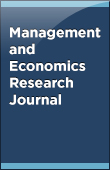
10.18639/MERJ.2020.964791
Original Research Article
Apr 02, 2020
This study examined the nexus between capital flight and economic development in Nigeria. The null hypothesis was that capital flight has no significant relationship with economic development in Nigeria. The study used the auto regressive distributed lag (ARDL) method on data obtained from the Central Bank of Nigeria and the World Bank, for the period 1986–2018, to examine the relationship between capital flight and economic development in Nigeria. The study examined the unit root problem and cointegrating properties of the data. The unit root problem was tested for by using the augmented Dickey–Fuller (ADF) and Phillips–Perron (PP) tests. Findings from ARDL showed an inverse relationship exists between capital flight, real exchange rate, and economic development. This implies that the variables contributed significantly to reduce economic development within the study period. However, a positive relationship existed between economic development and adult literacy rate in Nigeria. By implication, improvements made in providing quality and affordable education tend to have a positive impact on economic development in Nigeria. The study concluded that economic development is strongly influenced by capital flight, real exchange, and adult literacy rates in Nigeria. The study, therefore, recommends that government policies to curb capital flight should be introduced and monitored so as to lead to economic development in Nigeria.

10.18639/MERJ.2020.1042604
Case Study
Apr 02, 2020
Nonprofit organizations have been a part of the US business economy since the late 1800s. Religious nonprofits have seen consistent growth in availability and services for the past several years. With that growth, there is increased competition. The purpose of this case study is to analyze International Sports Federation, a nonprofit organization, and provide recommendations for sustainable growth. Today’s religion-focused organizations find themselves challenged in a disruptive climate. The result of this research is beneficial to scholars and practitioners, so that they can assist religious nonprofit organizations in gaining sustainable success under the lens of disruptive change in the marketplace.

10.18639/MERJ.2020.990011
Original Research Article
Apr 01, 2020
The purpose of this paper is to assess competitive advantage gained by large-sized banks in the Gulf Cooperation Council (GCC) countries. To investigate the association between return to scale and profitability, the authors have adopted quintile and logistic regression analysis, using data for 81 and 84 banks operating in GCC countries during the years 2016 and 2015, respectively. Their findings indicate a positive association between bank size and increasing return to scale, implying that bigger banks show increasing return to scale, but with decreasing rate, as represented by the negative coefficient of the square of the asset variable. Their results also show medium and upper quintiles of profits are significantly and positively associated with assets, but negatively associated with deposits, implying banks with larger deposits are facing liability management problems. In general, these results support the evidence that large-sized banks in GCC countries are displaying competitive advantage gains over small-sized banks, but these competitive advantage gains are decreasing with bank size increase.

10.18639/MERJ.2020.961566
Original Research Article
Mar 05, 2020
This study aims to examine and compare the effects of ethical leadership (EL) and transformational leadership (TL) separately on different dimensions of corporate social responsibility (CSR) including (i) CSR to media (M), (ii) CSR to employee (E), (iii) CSR to customer (C), and (iv) CSR to NGOs (N). Convenience sampling methodology was used to collect the data through two survey questionnaires. In total, 266 responses of employees and managers were received: 87 responses were collected from the customers of top companies in Sulaymaniyah, that is, Carrefour, Qaiwan, Asiacell, and Korek. The methodology includes descriptive statistics, regression analysis, correlations, and covariance. This study provides a unique insight into the relationship between CSR and different types of leadership styles (EL and TL). The study finds out that both EL and TL have positive relationships with the variables M, E, C, and N. Leadership style, which leads an organization to better CSR in all of the above-mentioned dimensions, has been identified in this study.
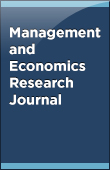
10.18639/MERJ.2020.961352
Original Research Article
Jan 31, 2020
The Kenyan private health sector is one of the most developed in Sub-Saharan Africa and is highly critical in healthcare delivery. It is estimated 47 percent of the first quintile of income earners utilize the private facility for healthcare needs and 33 percent of women seek family planning (FP) services in this sector. However, the cost of healthcare services has been a great impediment to service utilization. To improve service quality and increase access, social franchising, interventions on the demand side such as the use of insurance and vouchers, and supply of subsidized medical products on the supply side are intended to reduce the cost of services. This study sought to investigate the impact of interventions of social franchisors on the cost of healthcare in private facilities in Kenya. The study used primary data collected from 215 individuals living within catchment areas with private health facilities using researcher-administered questionnaire. The main franchisors included in this study were Sustainable Health Foundation (CFW) and Population Services Kenya (Tunza). Results revealed that women whose primary motivation to visit private facilities included FP services, need of a lower cost of treatments, and quality services had higher odds of choosing franchised health facilities. Propensity score matching (PSM) using three matching criteria—nearest neighbor, kernel matching, and radius matching of 0.01—indicated that individuals seeking children’s health services and 3-month FP methods paid similar amounts in either franchised or nonfranchised health facilities. However, there was a huge cost variance for long-term FP methods where women paid significantly less, implying that social franchisors’ main impact is on long-term FP methods. The cost variance was due to vouchers utilized by some respondents hence, incurring zero cost in franchised facilities. Therefore, the study recommends the expansion of social franchising membership and the use of the voucher system for financially incapable consumers.
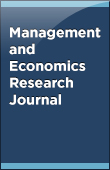
10.18639/MERJ.2020.961199
Original Research Article
Jan 30, 2020
Globally, the health sector is an area that any government must focus on since health is a right of every human being. Kenya particularly initiated the idea of devolution and the Big Four Agenda to ensure service delivery to citizens was achieved. Nevertheless, the situation in the public health sector has been encountering challenges due to dissatisfaction of personnel culminating in strikes. The objective of this study was to explore the effect of the working environment on service delivery in the health sector in Nyeri County, Kenya. The study was guided by the person–environment fit theory. The descriptive cross-sectional research design was used. The target population was derived from public hospitals in Nyeri County. Proportionate stratified random sampling was utilized, where 141 respondents were targeted, comprising doctors, clinical officers, and nurses. Data was collected using a closedended questionnaire. A pilot study was conducted at Mukurwe-ini Hospital to enhance the validity and reliability of the data-collection instrument. A Cronbach alpha coefficient of 0.7 was used to ascertain the reliability of the instrument. Data was analyzed using descriptive and inferential statistics from the 78.7% respondents. The findings established that the working environment had positive and significant effects on service delivery (b1 5 0.476, p-value 5 0.000) at the 5% level of significance, hence rejecting the null hypothesis. The study further established that the public health sector in Kenya should address the drug shortage, medical staff working hours, and machine maintenance as they would adversely affect quality of service delivery. The study recommends that the public health sector should provide health workers a conducive working environment and all necessary tools and equipment to enable them to discharge their duties effectively with a view to enhance service delivery to patients. Future research should focus on the importance of on–the-job training for effective service delivery in the public health sector.

10.18639/MERJ.2020.870688
Original Research Article
Jan 21, 2020
There have been massive research works done on the concept of market timing and selectivity skills that are applied by the fund managers to optimize the returns to the fundholders/investors/clientele. The fact that still remains unidentified/studied is the factor(s) that are influential enough for the maximization of returns. There is a general perception that investors will only look upon the returns but the very factor that may influence that return is yet to be analyzed. This study focuses on gaining an insight into whether there is any correlation that exists between the fund manager’s selection or/and market timing abilities that, in turn, can be useful to the investors also in finding out which fund and fund manager to be trusted for investment.
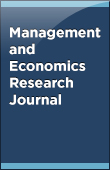
10.18639/MERJ.2020.961742
Original Research Article
Jan 10, 2020
This research is motivated by the convenience for consumers to move from an online site to another online site when shopping online. This makes consumers vulnerable to switching to other online shopping sites. This study aims to determine the role of e-satisfaction in mediating the effect of e-service quality and e-wom on e-loyalty in online marketplace customers in the city of Denpasar. The sampling method in this study is nonprobability sampling with a purposive sampling technique. Data were collected from 120 respondents who met the criteria of having made an online shopping transaction at least three times on an online marketplace site and is domiciled in Denpasar City. The analytical method used is path analysis estimated using statistical software. The results showed that e-service quality had a positive and significant effect on e-satisfaction; e-wom has a positive and significant effect on e-satisfaction; e-service quality has a positive and significant effect on e-loyalty; e-wom has a positive and significant effect on e-loyalty; e-satisfaction has a positive and significant effect on e-loyalty; e-satisfaction is significantly able to mediate the effect of e-service quality on e-loyalty; and e-satisfaction is significantly able to mediate the effect of e-wom on e-loyalty. The contribution that can be given by the author is to enrich and complete the study of online marketing especially in developing countries and especially Bali; increasing online sales is important to be studied more.
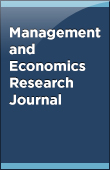
10.18639/MERJ.2019.961704
Review Article
Jan 06, 2020
Special Issue S4: “Global Trade Wars - A Case of Sino-US Trade War”
The trade war, which antagonizes today the United States and China, questions the free trade principle in international trade. To show the dangerousness of this trade war for the world economy, this paper explores the theoretical limits of the comparative advantage principle by analyzing the limitations of the applicability of the comparative costs and endowments criteria. We conclude that the international trade theories not based on the comparative advantage principle are the exception to the rule and therefore, cannot be used to justify the American positions, except to introduce a certain degree of political considerations. Specifically, we show that the international trade theories, other than the Ricardian theory and the HOS factorial theory, are exceptions to the applicability of the comparative costs and endowments criteria. In light of this argument, one should seek explanations of the war-like trade logic of the Trump Administration in the international political economy. In this perspective, international trade is no longer necessarily a positive-sum game.

10.18639/MERJ.2020.962097
Review Article
Jan 03, 2020
Innovation public policy has an essential role in influencing the competitive capacity of companies and is strongly associated with their ability to innovate and the way they are organized. As important as the technological organization of work is the social dimension, namely, involvement, participation, and commitment of the workforce, as these are, par excellence, factors that contribute to creating added value and differentiation for companies. In this sense, the concept of innovation depends on an integrated vision between the human dimension and the other multiple dimensions that innovation can assume. Public policies, besides the goal of creating a more modern and competitive business and industrial context, also are focused on the development of the workforce, not only in digital competences but also in soft skills. This type of skill contributes to creating a more innovative context and a culture of innovation. This article’s goal is to make a global overview of innovation and the public policies to promote the modernization of companies and influence the way they contribute to economic growth.
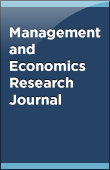
10.18639/MERJ.2020.958657
Original Research Article
Jan 02, 2020
This paper employs a combination of unit root tests and fractional integration techniques using the ARFIMA(p,d,q) model to test rational bubbles, which implies herd behavior, in Bombay Stock Exchange (BSE). The results in the paper strongly support the evidence of herd behavior in the daily, weekly, and monthly price aggregates. Moreover, the paper also investigates the degree of conditional volatility persistence using FIGARCH(p,d,q) specification to show that the persistence of shocks to stock price and dividend yield volatilities is short-termed.

10.18639/MERJ.2020.961567
Original Research Article
Jan 02, 2020
In the era of globalization and making headway in innovation, educational establishments and industries are confronting new difficulties as well as openings in the zone of transferring knowledge. The stipulation for students and lecturers has changed significantly and they anticipate becoming competent enough to use new technology for researching. With the growing pace of technology, the faculty, students, and managers are becoming more hi-tech-oriented as never before, which is resulting in more demand for research and training. Training will help the academia–industry to compete in the global environment as well as cater to international students and fulfill their needs too. However, to remain competent globally, knowledge transfer has become the need of the hour to disseminate knowledge and provide inputs to solve business problems. Knowledge transfer between educational institutions and industry is considered as an important driver of innovation and economic growth, as it eases the commercialization of new scientific knowledge within firms. Knowledge transfer denotes facilitating the sharing of the mentioned knowledge with one another. The paper will emphasize on a methodical literature review of the academia–industry interface in order to identify various factors contributing to their effectiveness. The primary data was collected through a questionnaire survey done on a sample of 100 employees working in various educational institutions and industries of Moradabad city, Uttar Pradesh, India and analyzed with the help of various statistical tools. The study also aims to identify the impact of key success factors on employee compliance with knowledge transfer. The researcher also evaluates the impact of employee compliance with knowledge transfer on organizational effectiveness. The contribution of this study will help both educational institutions and industry to better understand the knowledge transfer systems.
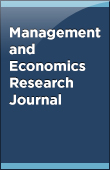
10.18639/MERJ.2019.eS4.BAI
Editorial Note
Dec 31, 2019
Special Issue S4: “Global Trade Wars: A Case of Sino–US Trade War”
In the 21st century, trade has been recognized as the most significant vehicle for accelerating the pace of growth and development for a country, irrespective of developed or developing in particular, and global economy, in general. Accordingly, trade disputes and wars that have come out as the biggest issues for the global trading system are a matter of great concern. This is because the very purpose of creating World Trade Organization (WTO) is being defeated, that is “promotion of multilateral trading system”. Trade disputes and wars that are being combined with the “build up in leverage and higher asset unit values” may have emerged out as a deterrent to world trade and the same in turn may affect the existing global trading system to a greater extent. It has become sin-quo-non to have minimum possible trade wars among the major trading economies across the world. In the past decade, we have already seen that two contributory factors, namely leverage and asset prices, which were responsible for the 2008 crisis. The same situation has started coming up. Hence, the global leaders must pay attention on both the issues on war footing. Otherwise, the situation may become worse and out of control. It is an undisputed fact that world growth has been strong and sound during the last few years. However, on the one hand, the matter of concern for global players is how long it will remain strong and sound; on the other side, the persisting elevated asset price could be justified on the basis of strong and sound economic growth in general, world trade in particular, across the world.